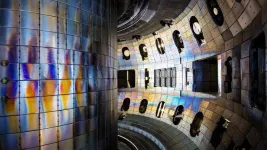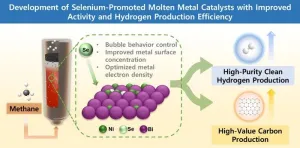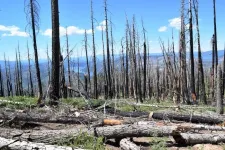Colorectal cancer (CRC) is the second most commonly diagnosed cancer in China and a leading cause of cancer-related mortality. Despite improvements in treatment, the survival rate remains lower than in Western and other Asian countries due to late-stage diagnosis. Given that CRC typically develops over a prolonged period from precursor lesions, early detection and timely intervention are crucial for improving patient outcomes. However, CRC screening in China faces several challenges, including regional disparities, economic constraints, and limited public awareness. Recent advancements in non-invasive diagnostic tests, innovative imaging techniques, and artificial intelligence (AI) applications have contributed to enhanced CRC detection and diagnosis. This review provides an overview of CRC screening in China, highlighting existing screening strategies, emerging technologies, and potential future directions.
Current Status of CRC Screening in China
Unlike many developed nations, China does not have a nationwide, organized CRC screening program. Instead, screening is available through government-funded initiatives such as the Cancer Screening Program in Rural China (CanSPRC) and the Cancer Screening Program in Urban China (CanSPUC). In addition, some major cities and provinces have established localized screening programs. The primary screening tools used in these programs include questionnaire-based risk assessments, fecal immunochemical tests (FIT), and colonoscopy for high-risk individuals. However, the overall screening coverage remains low, largely due to socioeconomic barriers and healthcare resource limitations. Expanding CRC screening accessibility and promoting public awareness remain key challenges.
Screening Techniques for CRC in China
CRC screening methods can be categorized as non-invasive and invasive. Each technique has advantages and limitations in terms of sensitivity, specificity, and feasibility.
Fecal Immunochemical Test (FIT)
FIT is a widely used non-invasive screening tool that detects human hemoglobin in stool samples. Compared to traditional guaiac-based tests, FIT has improved specificity and is unaffected by dietary factors. Large-scale studies have demonstrated that FIT-based screening programs significantly reduce CRC incidence and mortality. However, FIT has limited sensitivity for detecting precancerous adenomas, and compliance with follow-up colonoscopy after a positive test result remains suboptimal.
Multitarget Stool DNA (mts-DNA) Test
The mts-DNA test combines stool-based DNA analysis with hemoglobin detection, enhancing CRC sensitivity. While mts-DNA testing has shown higher sensitivity for CRC than FIT, its specificity for adenomas is lower. High costs and complex stool collection procedures have limited its widespread implementation in China.
Colonoscopy
Colonoscopy remains the gold standard for CRC screening and diagnosis, offering direct visualization and removal of precancerous lesions. However, financial constraints, lack of specialized personnel, and concerns about discomfort contribute to low adherence rates. Studies suggest that combining FIT with colonoscopy may enhance participation while optimizing resource utilization.
Blood-Based Biomarkers
Blood-based tests for CRC detection, such as circulating tumor DNA and DNA methylation markers, are under investigation. While promising, these methods currently lack sufficient large-scale validation for routine screening use. Ongoing research may establish blood biomarkers as a cost-effective, non-invasive alternative to stool-based tests.
Other Emerging CRC Screening Methods
Additional CRC screening modalities include flexible sigmoidoscopy, colon capsule endoscopy, and computed tomography (CT) colonography. While these techniques offer advantages such as reduced invasiveness, limitations such as cost, technical complexity, and radiation exposure hinder their widespread adoption in China.
The Role of Artificial Intelligence in CRC Screening
AI has shown great potential in enhancing CRC screening and diagnosis. AI-assisted colonoscopy using computer-aided detection (CADe) systems improves lesion detection rates by compensating for human oversight. Additionally, AI-based computer-aided characterization (CADx) systems facilitate real-time polyp assessment, reducing unnecessary biopsies. Automated quality control systems have also been developed to optimize colonoscopy performance. Despite these advances, challenges such as regulatory frameworks, integration into clinical practice, and cost-effectiveness analysis must be addressed.
Challenges and Future Perspectives
The lack of a nationwide CRC screening program remains a major barrier to early detection efforts in China. Expanding screening coverage, increasing public awareness, and improving follow-up adherence are critical priorities. Financial constraints and disparities in healthcare access further hinder widespread implementation. Future research should focus on optimizing cost-effective screening strategies, particularly for high-risk populations, and integrating emerging technologies such as AI and novel biomarker-based diagnostics.
Limitations
This review primarily focuses on available screening methods rather than a cost-effectiveness analysis. Additionally, while novel technologies present promising supplementary screening options, further real-world studies are needed to assess their practical impact. The perspectives of screening participants, particularly regarding adherence and preferences, warrant further investigation.
Conclusions
Despite ongoing challenges, CRC screening in China has made significant progress. A multifaceted approach involving improved screening programs, advanced diagnostic techniques, and AI-assisted tools will be essential for enhancing early CRC detection. Future studies should focus on refining screening strategies, increasing accessibility, and evaluating the long-term impact of novel technologies on CRC prevention.
Full text
https://www.xiahepublishing.com/2835-3315/CSP-2024-00023
The study was recently published in the Cancer Screening and Prevention.
Cancer Screening and Prevention (CSP) publishes high-quality research and review articles related to cancer screening and prevention. It aims to provide a platform for studies that develop innovative and creative strategies and precise models for screening, early detection, and prevention of various cancers. Studies on the integration of precision cancer prevention multiomics where cancer screening, early detection and prevention regimens can precisely reflect the risk of cancer from dissected genomic and environmental parameters are particularly welcome.
Follow us on X: @xiahepublishing
Follow us on LinkedIn: Xia & He Publishing Inc.
END








